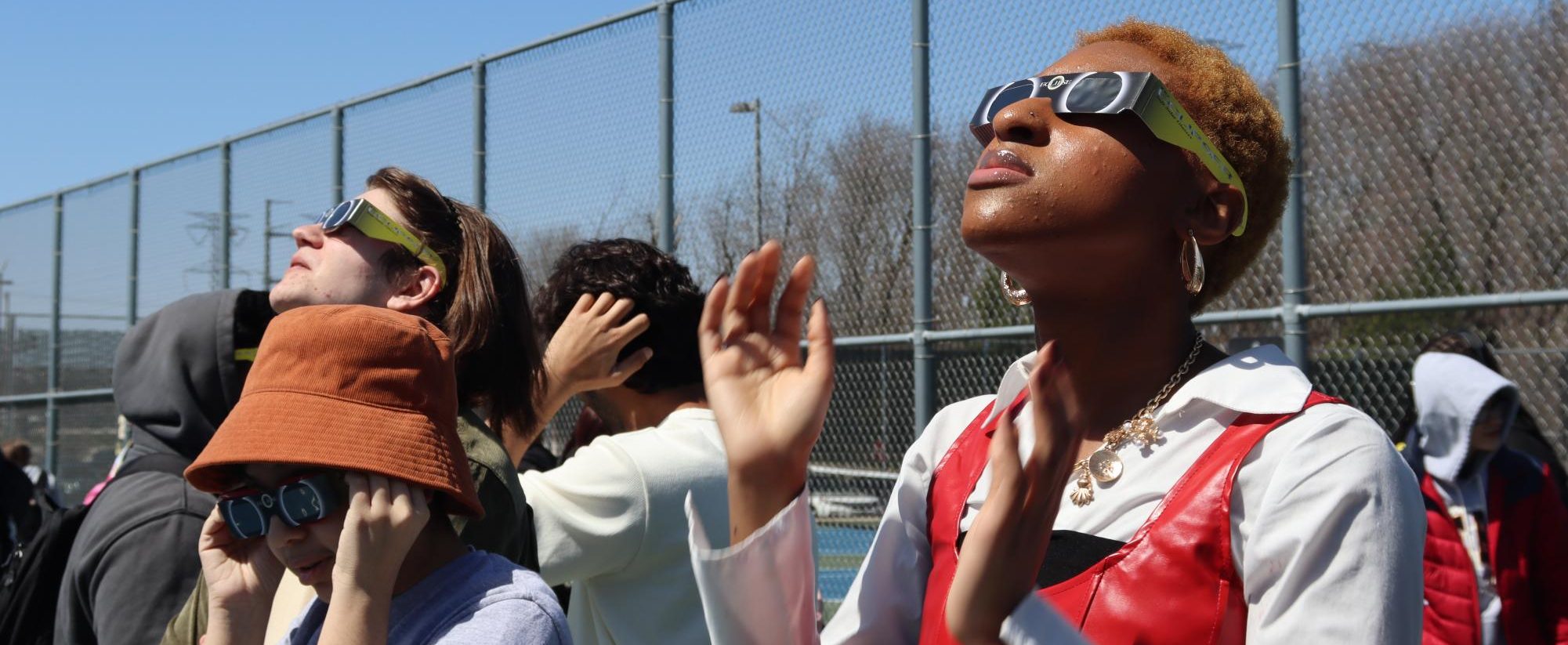Metea Valley students observed a near-total solar eclipse yesterday, Tuesday, April 8, 2024. As the last solar eclipse visible in the Aurora area was back in 2017, yesterday provided an opportunity for students to watch the partial eclipse starting at 12:51 p.m., peaking at 2:07 p.m., and ending at 3:21 p.m.
While not all students were permitted to leave class during the timespan of the eclipse, Earth and Science classes guaranteed the opportunity for those students enrolled in the class to observe the event during periods six, seven, and eight. Earth and Science teacher Vanessa Troiani was one of the teachers who brought her students outside to experience the eclipse.
“This celestial event presents a unique educational opportunity for our students to learn about astronomy and the wonders of the universe,” said Troiani. “Despite our area not being in the direct path of totality, we are still able to observe about 94% of a partial eclipse. We have to seize this opportunity to view this special celestial event!”
The 2024 solar eclipse was the last total solar eclipse to touch North America until August 23, 2044. Troiani explained more in-depth about the event.
“A solar eclipse happens when the moon perfectly aligns between the sun and the earth,” said Troiani. “The moon blocks the sun’s light and casts a shadow on part of Earth which forces the alignment to be perfect, and we have to be in the narrow path of the moon’s shadow to experience this special event.”
Additional teachers were outside to supervise the viewing. Science Department Chair Nick Marasco was one of them.
“I’m personally ecstatic about this event,” Marasco said. “Who would have thought we’re gonna get such great weather and clear skies to see this.”
As this was a rare occurrence, Troiani and other staff members emphasized the importance of safety precautions when observing a solar eclipse. The science department purchased approved solar eclipse viewers for each Earth and Space Science student. Additional glasses were purchased to permit other science classes to view the eclipse.
“Looking directly at the sun without adequate eye protection can cause serious eye damage, including permanent blindness,” Troiani said. “The solar eclipse viewers are specifically designed to filter out harmful radiation and allow safe eclipse observation. Homemade or improvised viewing devices, such as sunglasses, are unsafe for observing a solar eclipse.”
Students enrolled in the Earth and Science class had prior knowledge of the eclipse, allowing them to understand the science behind the event. Senior Michelle Jurec is a student actively taking the class.
“It is cool to see the eclipse,” Jurec said. “We don’t get to see this very often.”






